A beam of light is incident through the holes on one side of a box emerges out throught holes on its opposite side as shown in the following figure:
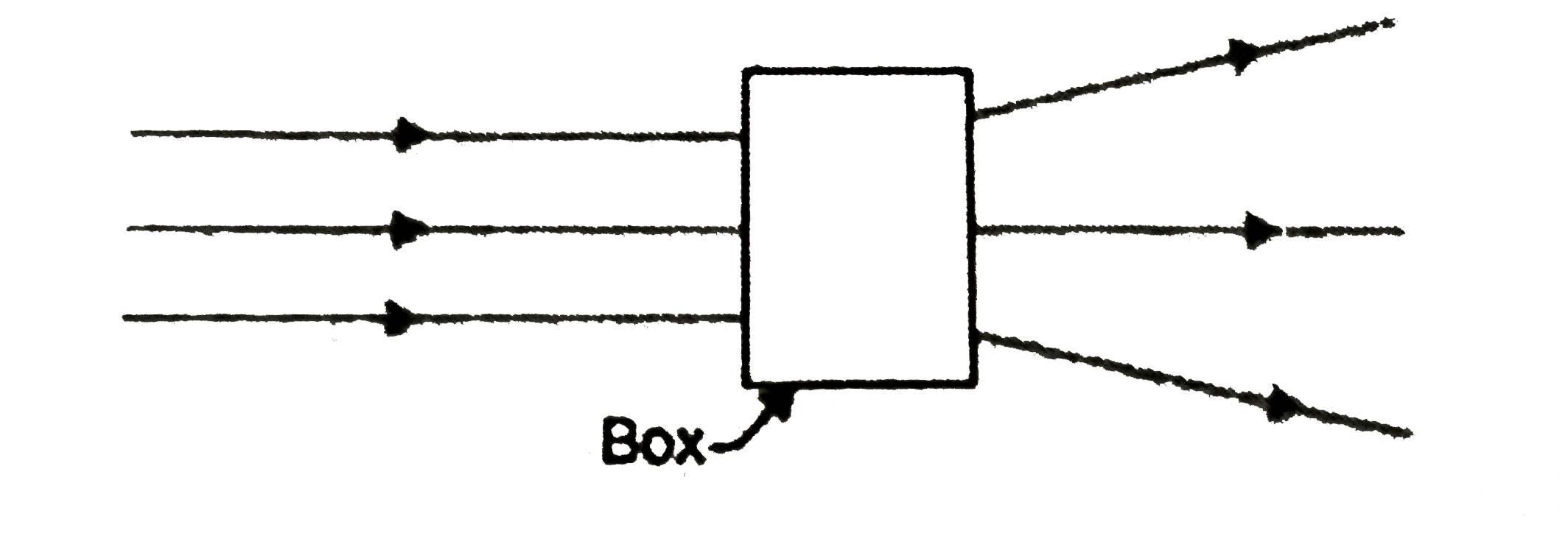
The box contains:
a glass prism
a concave lens
a convex lens
a parallel-sided glass slab
The correct Answer is:B
b
Topper's Solved these Questions
- REFRACTION OF LIGHTBOOK - LAKHMIR SINGH & MANJIT KAURCHAPTER - REFRACTION OF LIGHTEXERCISE - LONG ANSWER TYPE QUESTIONS
3 Videos
- REFRACTION OF LIGHTBOOK - LAKHMIR SINGH & MANJIT KAURCHAPTER - REFRACTION OF LIGHTEXERCISE - SHORT ANSWER TYPE QUESTIONS
1 Videos
- REFRACTION OF LIGHTBOOK - LAKHMIR SINGH & MANJIT KAURCHAPTER - REFRACTION OF LIGHTEXERCISE - VERY SHORT ANSWER TYPE QUESTIONS
1 Videos
- REFLECTION OF LIGHT BOOK - LAKHMIR SINGH & MANJIT KAURCHAPTER - REFLECTION OF LIGHT EXERCISE - Very Short Answer Type Questions
1 Videos
- SOURCES OF ENERGY BOOK - LAKHMIR SINGH & MANJIT KAURCHAPTER - SOURCES OF ENERGY EXERCISE - NCERT
8 Videos
Similar Questions
A beam of parallel light rays is incident through the holes on one side of a box and emerges out through the holes on its opposite side as shown in the diagram below:

Which of the following could be inside the box?
View SolutionNoor, a young student, was trying to demonstrate some properties of light in her Science project work. She kept ‘X’ inside the box (as shown in the figure) and with the help of a laser pointer made light rays pass through the holes on one side of the box. She had a small butter-paper screen to see the spots of light being cast as they emerged.

If the object inside the box was made of a material with a refractive index less than 1.5 then the
View Solution
Knowledge Check
A beam of light is incident through the holes on side A and emerges out of the holes on the other face of the box as shown in Figure. Which of the following could be inside the box ?
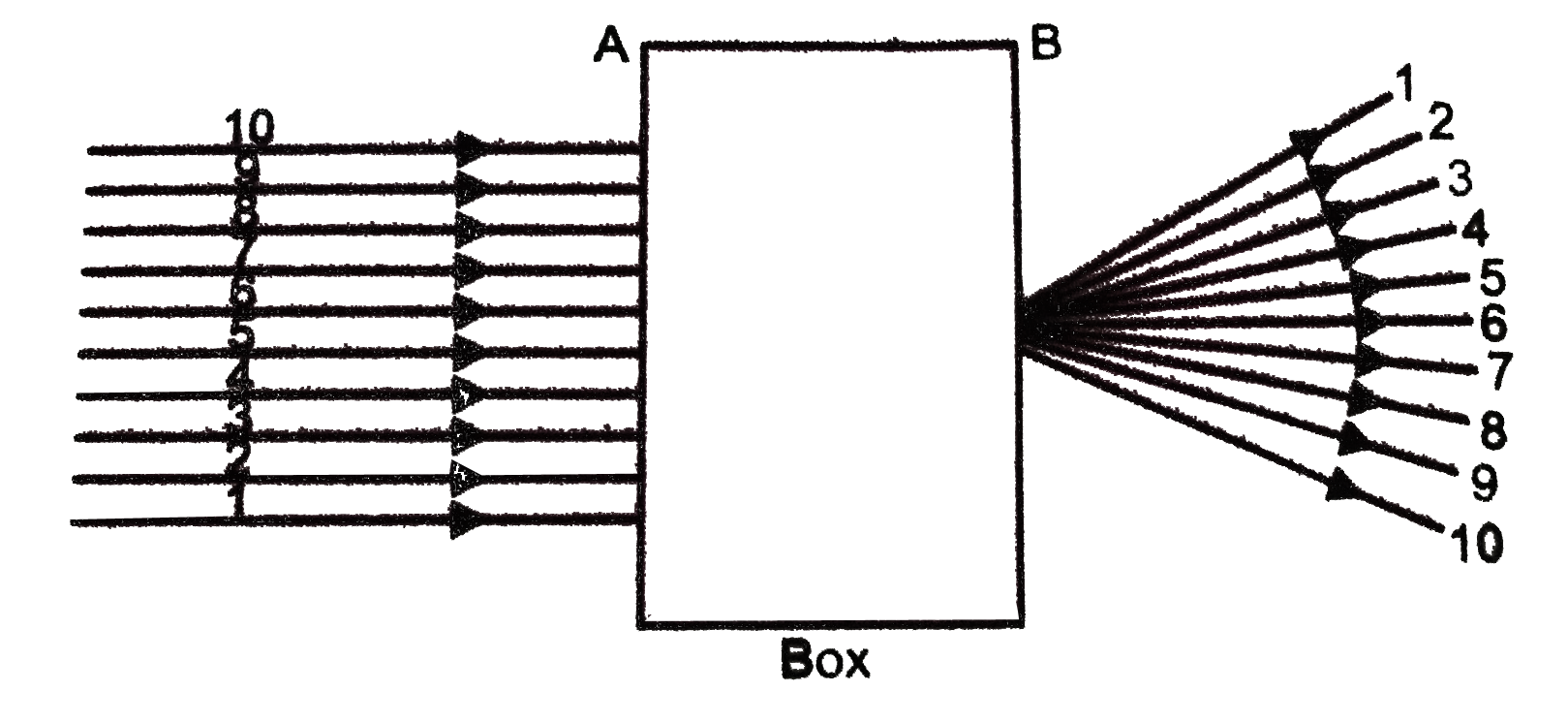 Aconcave lensBRectangular glass slabCPrismDConvex lens
Aconcave lensBRectangular glass slabCPrismDConvex lensLenses made of transparent materials such as glass or plastic with curved surfaces. Diverging lenses are thicker at their edges than at their centres and make light rays passing through them spread out. Converging lenses are thicker in middle than at edges and make light rays passing through them focus at a point.
A beam of light is incident on the box through the holes on side A and emerges out of the holes on the side B of the box:
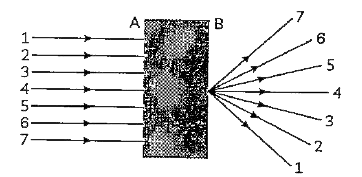
Which of the following is present the boxAConcave lensBRectangular glass plateCprismDConvex lensBeams of light are incident through the holes A and B and emerge out of box through the holes C and D respectively as shown in Figure. Which of the following could be inside the box ?
 AA rectangular glass slabBA convex lensCA concave lensDA prism
AA rectangular glass slabBA convex lensCA concave lensDA prism
A long, straight wire, carrying a current 200A, runs through a cubical wooden box, entering and leaving through holes in the centre of opposite faces (as shown in Fig). The length of each side of the box is 20 cm. Consider an element dl,0.100cm long of the wire at the centre of the box. Compute the magnitude dB of the magnetic field produced by this element at the point a, b,c,d and e as shown fig. Points a,c, and dare at the centres of the faces of the cube, point b is at the midpoint of one edge, and point e is at a corner. Copy the figure and show the direction and relative magnitudes of field vectors.
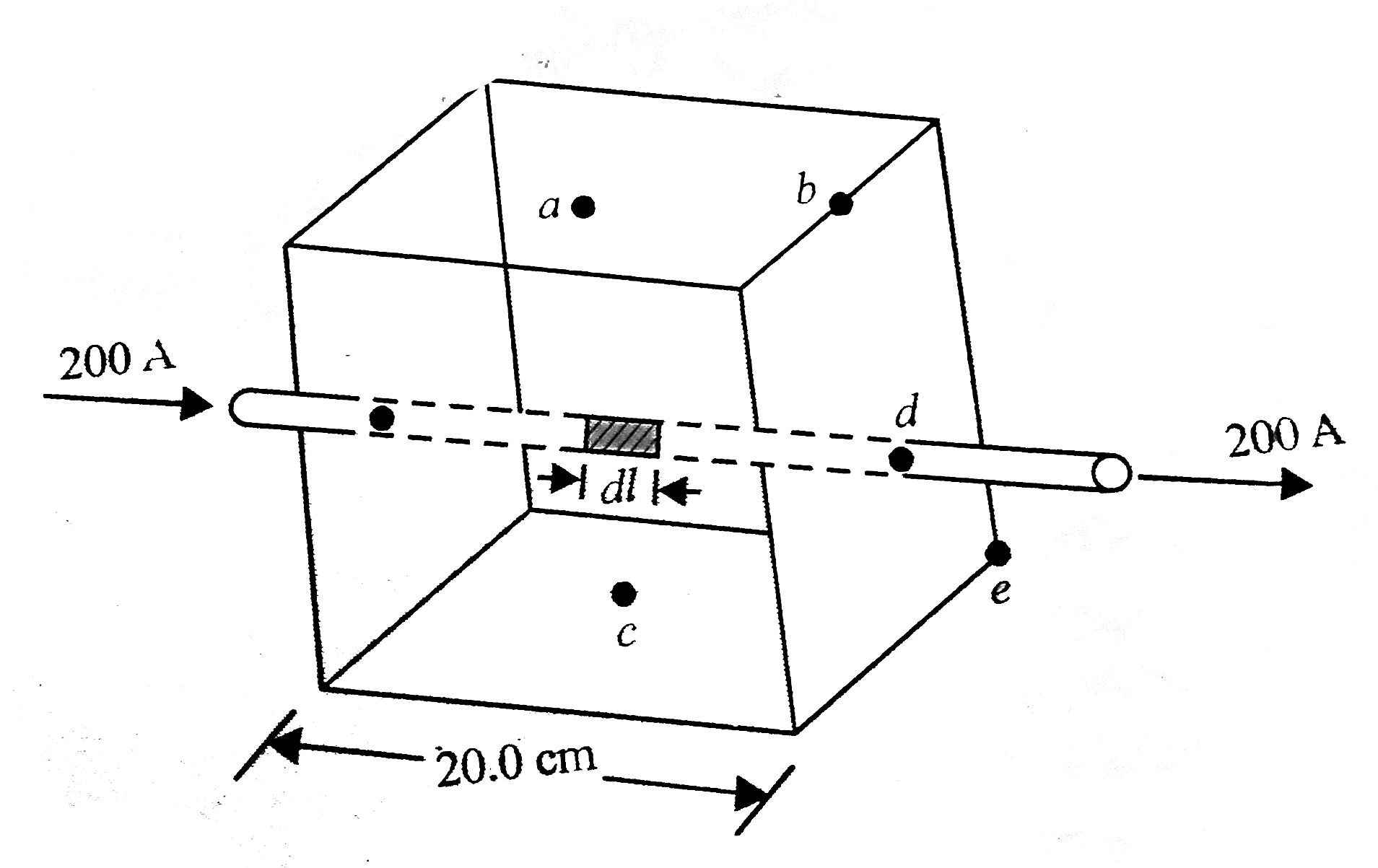
View SolutionA ray of light, travelling parallel to diameter of a sphere enters the sphere through a hole at point A as shown in the figure. The inner surface of the sphere is made perfectly reflecting. Find the number of reflections suffered by the ray before coming out of the sphere.

View SolutionCase : Noor, a young student, was trying to demonstrate some properties of light in her Science project work. She kept 'X' inside the box (as shown in the figure) and with the help of a laser pointer made light rays pass through the holes on one side of the box. She had a small butter-paper screen to see the spots of light being cast as they emerged.
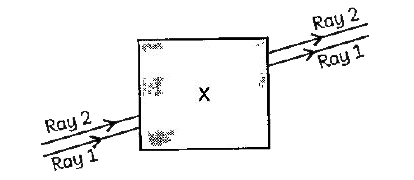
If the object inside the box was made of a material with a refractive index less than 1.5 then the :
View SolutionTwo beams of light are incident normally on water (R.l. = 43). If the beam 1 passes through a glass (R.l. = 32) slab of height h as shown in the figure, the time difference for both beams for reaching the bottom is
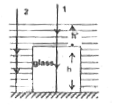
View SolutionCase : Noor, a young student, was trying to demonstrate some properties of light in her Science project work. She kept 'X' inside the box (as shown in the figure) and with the help of a laser pointer made light rays pass through the holes on one side of the box. She had a small butter-paper screen to see the spots of light being cast as they emerged.
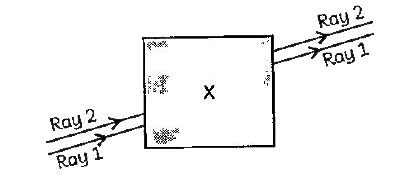
She measured the angles of incidence for both the rays on the left side of the box to be 48.6∘ . She knew the refractive index of the material 'X' inside the box was 1.5. What will be the approximate value of angle of refraction? (use the value of sin48.6∘≈=0.75)
View Solution
